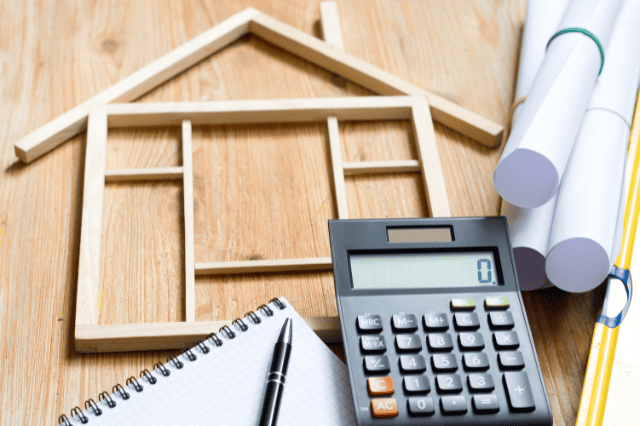When you hear about “releasing equity,” it can sound a bit complex at first. But at its core, it’s about using the value you already own in your home to open up new financial possibilities, such as renovating, buying another property, funding retirement, or simply giving yourself some breathing room.
In this guide, the team at Ausfirst Lending Group will unpack everything you need to know about home equity release in Australia. We’ll explore different types of equity release loans, real-world scenarios, important risks to be aware of, and practical advice to help you decide if it’s the right move for you.
We’ll also answer some of the most common questions, such as what is equity release, how does equity release works, and whether equity release may be a suitable option for you.
What is Equity Release?
First things first, what exactly is an equity release?
Equity is the part of your property’s value that belongs to you after taking away any amount you still owe on your mortgage.
Equity release means accessing some of that ownership value, turning it into cash, without selling your home. In Australia, homeowners can tap into this growing value for various purposes, from funding home improvements to purchasing investment properties or supporting retirement income.
Example: Let’s say your home is valued at $800,000, and your mortgage balance is $300,000.Your equity is $500,000. Through an equity release, you could potentially access part of that $500,000 while continuing to live in your home.
How Does Equity Release Work in Australia?
Equity release Australia options have grown in recent years, and there are several different methods depending on your situation:
- Refinancing your existing home loan for a higher amount and withdrawing the difference (this is often called a cash-out refinance).
- Taking out a home equity loan, which is a separate loan secured against your existing home equity.
- Applying for a reverse mortgage if you’re aged 60 or older.
- Entering a home reversion agreement where you sell a share of your property’s future value in exchange for a lump sum today.
Each type of equity release loan has different structures, eligibility rules, and costs attached.
In Australia, most lenders let you borrow up to 80% of your home’s value without paying for Lenders Mortgage Insurance (LMI). An Equity Loan Calculator can help you work out roughly how much money you could unlock from your home.
How to Release Equity From Your Home
Wondering how to release equity from home? Here’s a simple breakdown:
1. Check Your Home’s Current Value
You’ll need a recent valuation to work out how much usable equity you have.
2. Calculate Your Usable Equity
Most lenders let you access up to 80% of your home’s market value, minus your existing loan balance.
Example Calculation:
- Home Value: $800,000
- 80% of Value: $640,000
- Existing Loan: $300,000
- Usable Equity = $640,000 – $300,000 = $340,000
3. Decide How You Want to Access the Funds
- Increase your existing home loan
- Take a separate home equity loan
- Consider a reverse mortgage (for older Australians)
4. Apply for an Equity Release
Lenders will assess your credit history, income, existing debts, and the property itself.
5. Settlement and Access to Funds
Once approved and settled, you can receive your equity funds either as a lump sum, a line of credit, or in staged payments.
Do You Pay Interest on Equity Release?
Yes, in most cases, you do.
When you access a standard equity release mortgage, it works like any other home loan: interest is charged on the amount you borrow. The rate is often lower than credit cards or personal loans, but it’s still important to factor repayments into your budget.
For reverse mortgages, while you don’t make regular repayments, interest compounds over time, meaning the loan amount grows faster the longer you hold it.
Tip: Always ask the lender or broker to explain the total cost over time, not just the starting interest rate.
How Much Equity Release Can I Get?
This depends on several factors, including:
- Your home’s market value
- The remaining loan balance
- The lender’s policy (most cap at 80% Loan-to-Value Ratio)
- Your income and borrowing capacity
- Your age (for reverse mortgages)
To estimate how much equity release you can get, use the formula:
(Property Value × 80%) – Existing Home Loan Balance = Maximum Equity Release
For example, if your property is worth $1 million and your current mortgage is $400,000:
- 80% of $1 million = $800,000
- $800,000 – $400,000 = $400,000 usable equity.
However, the actual amount approved will depend on your financial situation and what you plan to do with the funds.
Using Equity to Buy Another Property
One of the smartest ways Australians leverage equity is by using equity to buy property, either upgrading their home or building a property investment portfolio.
How to Use Equity to Buy Another House:
- Access the usable equity by refinancing or taking a supplementary loan.
- Use the released funds as the deposit for a second property.
- Secure a new home loan for the remaining purchase cost.
For example, say you want to buy an investment property worth $600,000.
If you have $300,000 usable equity, you could use that to cover the 20% deposit and upfront costs, avoiding LMI on the new loan.
How Does Equity Work When Buying a Second Home?
When you’re buying a second home, the equity in your first home can be your biggest advantage.
Instead of saving another massive deposit from scratch, you use the value you already own.
Lenders treat the released equity similarly to cash savings, applying it toward the deposit or purchase costs.
However, it’s important to remember:
- You’ll be servicing two loans unless you sell your first home.
- Your borrowing capacity will be reassessed based on your income, debts, and expenses.
- If property values fall, your equity could be reduced, which might cause problems if you’re not prepared.
How Much Equity Can I Use?
Typically, you can use the amount up to 80% of your property’s value minus your existing mortgage.
General rule of thumb: The more equity you have, the stronger your position when buying another property. However, it is important to leave a “buffer” in your home, as borrowing right up to 80% may leave you financially exposed if markets dip or unexpected expenses arise.
Is It Worth Using Equity to Buy a Second Home?
It can be a very powerful strategy if done wisely.
Using equity can help you:
- Build wealth faster through property investment
- Avoid having to liquidate cash or other assets
- Benefit from long-term property growth and rental income
However, it also increases your debt levels, so it’s crucial to:
- Ensure that your rental income or your salary can comfortably cover repayments
- Maintain cash reserves for vacancies, repairs, or rising rates
- Plan for both best- and worst-case scenarios
Many successful investors use equity carefully to grow their portfolio, but it’s not a strategy to rush into without solid planning.
How Much Equity Do You Need for a Second House?
If you’re using equity to buy a second home, how much you need depends on the lender’s policies and the property’s value.
In general:
- You’ll usually need at least 20% of the second property’s value as a deposit to avoid LMI.
- If your usable equity covers this 20% plus any upfront costs (like stamp duty and legal fees), you may be able to purchase without additional savings.
For example, you want to buy a second property worth $700,000:
- 20% deposit = $140,000
- Additional purchase costs (approx. 5%) = ~$35,000
You’d ideally need around $175,000 in usable equity to cover everything comfortably.
How Much Equity Do You Need for a Second Mortgage?
If you’re applying for a second mortgage (meaning you keep your original home loan and take another secured loan), the equity requirement will be similar.
Lenders still prefer to keep the combined Loan-to-Value Ratio (LVR) at 80% or less across both loans.
- If you have 30% equity, you’re in a strong position.
- If you have just 20% equity, you might still qualify but could face higher risk assessments or extra conditions.
Each bank or lender may have slightly different guidelines, so it’s best to check specific policy details or work with a local mortgage brokers in Sunshine Coast.
How Much Can I Borrow if I Have Equity?
How much you can borrow depends on:
- Your usable equity (typically up to 80% of your property value)
- Your income and expenses (lenders will assess your ability to repay)
- Your credit history and overall risk profile
Quick Guide:
| Property Value | Mortgage Balance | 80% of Property Value | Usable Equity |
| $800,000 | $300,000 | $640,000 | $340,000 |
In this case, you might borrow up to $340,000, provided you can afford the repayments.
Important: Even if your home has $500,000 of equity, your ability to borrow against it will still depend on your income, debts, and financial stability.
Types of Equity Release in Australia
When we talk about equity release Australia options, it’s important to know there’s no one-size-fits-all product. Here are the main types:
1. Equity Release Loan (Cash-Out Refinancing)
- You can refinance your current home loan to access cash
- You could swap your existing home loan for a bigger one
- Use the extra funds however you choose (investment, renovation, debt consolidation)
- Regular mortgage repayments apply
Ideal for: Homeowners still working or with strong repayment capacity.
2. Home Equity Loan (Separate Loan)
- A second loan secured against your home equity
- Runs alongside your existing mortgage
- Typically comes with a fixed term and interest rate
Ideal for: Borrowers who want a specific loan for a renovation or investment without changing their main home loan.
3. Reverse Mortgage
- Available to Australians aged 60 or older
- No regular repayments required
- The balance of the loan, along with any interest, is usually repaid when the property is sold, either after you move into aged care or after you pass away.
Ideal for: Retirees needing additional cash flow without selling their home.
4. Home Sale Proceeds Sharing (Home Reversion)
- Sell a percentage of your home’s future sale value for a lump sum today
- No interest, but the provider gets a share of future sale proceeds
Ideal for: Older Australians seeking a lump sum without traditional debt but willing to share future property gains.
5. Home Equity Access Scheme (Government Option)
- Government-backed loan for pensioners
- Voluntary fortnightly payments or a lump sum
- Secured against your home
Ideal for: Older Australians receiving the Age Pension who want to boost income.
Benefits of Home Equity Release
Accessing your home’s equity can open many doors. Some common advantages include:
✅ Unlocking Cash for Renovations: Improve your living space and potentially increase property value.
✅ Buying Investment Property: Expand your wealth with rental income and capital gains.
✅ Debt Consolidation: Pay off higher-interest debts with lower-rate mortgage funding.
✅ Supporting Retirement Income: Particularly important for retirees needing to fund medical costs, living expenses, or lifestyle upgrades.
✅ Potential Tax Benefits: In some cases, interest on investment-related loans (such as buying rental properties) may be tax-deductible. (Seek independent tax advice.)
✅ Staying in Your Home: No need to sell your beloved home to access cash.
Risks and Considerations of Equity Release
Equity release can be a smart strategy, but it is not without potential risks:
⚠️ Debt Growth Over Time: Especially with reverse mortgages where interest compounds.
⚠️ Reduced Future Inheritance: Less property value left for heirs.
⚠️ Impact on Pension or Benefits: Particularly if accessing lump sums.
⚠️ Market Risk: Falling property prices can erode equity faster.
⚠️ Higher Foreclosure Risk: If new repayments are unaffordable.
Tip: Independent financial advice is strongly recommended before proceeding with any equity release strategy.
Is Equity Release a Good Idea?
Is equity release a good idea? The answer depends on your goals, your financial situation, and your long-term plans.
It can be an excellent tool if:
- You use it strategically for wealth building, such as purchasing a second property.
- You need funds for necessary home upgrades that will increase property value.
- You’re entering retirement and want to supplement your income without selling.
But it may not be ideal if:
- You have unstable income or poor credit.
- You’re prone to overspending.
- You aren’t comfortable with potential debt increases over time.
Conclusion: Is Home Equity Release Right for You?
Equity release gives Australians real options, whether you are chasing a second property, renovating your current home, or funding your retirement. However, it is not a decision to make lightly.
Before proceeding, take time to:
✅ Understand your usable equity and borrowing limits.
✅ Compare different equity release products carefully.
✅ Assess how repayments or loan conditions will impact your future.
✅ Seek independent financial advice if unsure.
✅ Think about long-term goals, not just short-term needs.
When used wisely, tapping into your home’s equity can be an empowering move that unlocks exciting new chapters in your life.
Ready to explore your home equity options? Speak with an experienced mortgage broker today and find out how you can unlock the potential in your property with confidence.
Frequently Asked Questions (FAQS)
While equity release can open up valuable opportunities, it’s important to understand that it also increases your debt over time. This is especially true with products like reverse mortgages, where interest compounds and adds to the loan balance.
Before deciding, make sure you are fully aware of the interest rates, fees, and any long-term impacts. It’s a good idea to speak with a mortgage broker or financial adviser to go through the finer details.
If you borrowed $100,000 at an interest rate of 6% p.a. over 25 years, your estimated monthly repayment might be around $644. Over the full term, the total repayment could reach approximately $193,200.
Tip: Always use your lender’s home loan calculator for a more personalised estimate based on your specific loan structure and rate.
Yes, you may still be able to access a home equity release even if you're self-employed. However, lenders will usually ask for extra documentation, such as your recent tax returns, BAS statements, or accountant letters to verify your income.
Because income can vary when you're self-employed, the process might involve a closer assessment of your borrowing capacity compared to salaried applicants. Speaking with a broker who specialises in self-employed lending could help you find a lender with more flexible options.
If your property value falls after you've taken out an equity release loan or equity release mortgage, your Loan-to-Value Ratio (LVR) could increase. This might not have an immediate impact if you're meeting repayments, but it could limit your ability to refinance or borrow more down the track.
In some cases, if you breach lender LVR limits (especially with investment properties), you may be asked to reduce your loan balance. This is why it's important to leave a reasonable equity buffer when accessing funds.
You can potentially release equity from either your main residence or an investment property in Australia. The key factor is how much usable equity is available and your ability to service any new or increased repayments.
Loan conditions can vary depending on whether the property is your home or an investment. It’s worth comparing different lenders carefully, and a mortgage broker can guide you to the options that fit your plans best.
Yes, many Australians use their home equity to combine and pay off higher-interest debts, like credit cards or personal loans, by adding them to their home loan at a lower interest rate.
While this can improve cash flow and simplify repayments, it's important to remember that stretching short-term debts over a longer mortgage term could increase the total interest paid over time. Financial advice may help you weigh up the pros and cons before proceeding.
The time it takes to complete a home equity release can vary depending on the lender and your circumstances. In many cases, it could take anywhere from two to six weeks from application to settlement.
Factors that could influence timing include property valuation delays, document verification, and lender processing times. Working with an experienced mortgage broker may help streamline the process and avoid common holdups.



